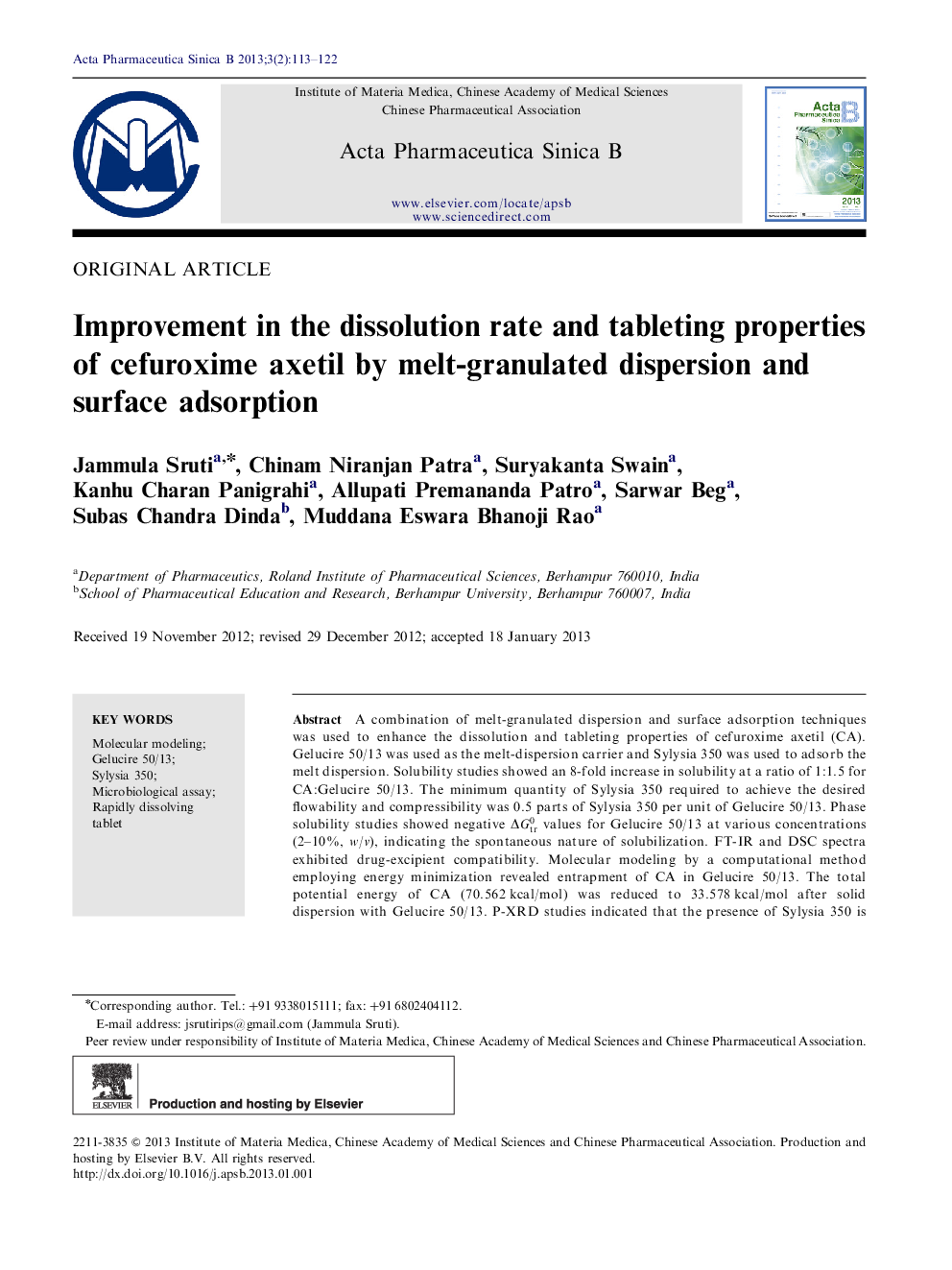| Article ID | Journal | Published Year | Pages | File Type |
|---|---|---|---|---|
| 2474553 | Acta Pharmaceutica Sinica B | 2013 | 10 Pages |
A combination of melt-granulated dispersion and surface adsorption techniques was used to enhance the dissolution and tableting properties of cefuroxime axetil (CA). Gelucire 50/13 was used as the melt-dispersion carrier and Sylysia 350 was used to adsorb the melt dispersion. Solubility studies showed an 8-fold increase in solubility at a ratio of 1:1.5 for CA:Gelucire 50/13. The minimum quantity of Sylysia 350 required to achieve the desired flowability and compressibility was 0.5 parts of Sylysia 350 per unit of Gelucire 50/13. Phase solubility studies showed negative ΔGtr0 values for Gelucire 50/13 at various concentrations (2–10%, w/v), indicating the spontaneous nature of solubilization. FT-IR and DSC spectra exhibited drug-excipient compatibility. Molecular modeling by a computational method employing energy minimization revealed entrapment of CA in Gelucire 50/13. The total potential energy of CA (70.562 kcal/mol) was reduced to 33.578 kcal/mol after solid dispersion with Gelucire 50/13. P-XRD studies indicated that the presence of Sylysia 350 is less likely to promote the reversion of the amorphous CA to a crystalline state. In vitro dissolution studies demonstrated an improved dissolution rate, and drug release at 15 min (Q15min) exhibited a 15-fold improvement. The rapidly dissolving CA tablets showed improved dissolution with improved tableting properties.
Graphical abstractDispersion granules were prepared by using gelucire 50/13 and sylysia 350 as carriers of melt dispersion and surface adsorption, respectively. Drug release at 15 min exhibited a 15-fold improvement in dissolution rate. The rapidly dissolving CA tablets showed an improved rate of dissolution and enhanced tableting properties. Figure optionsDownload full-size imageDownload as PowerPoint slide
